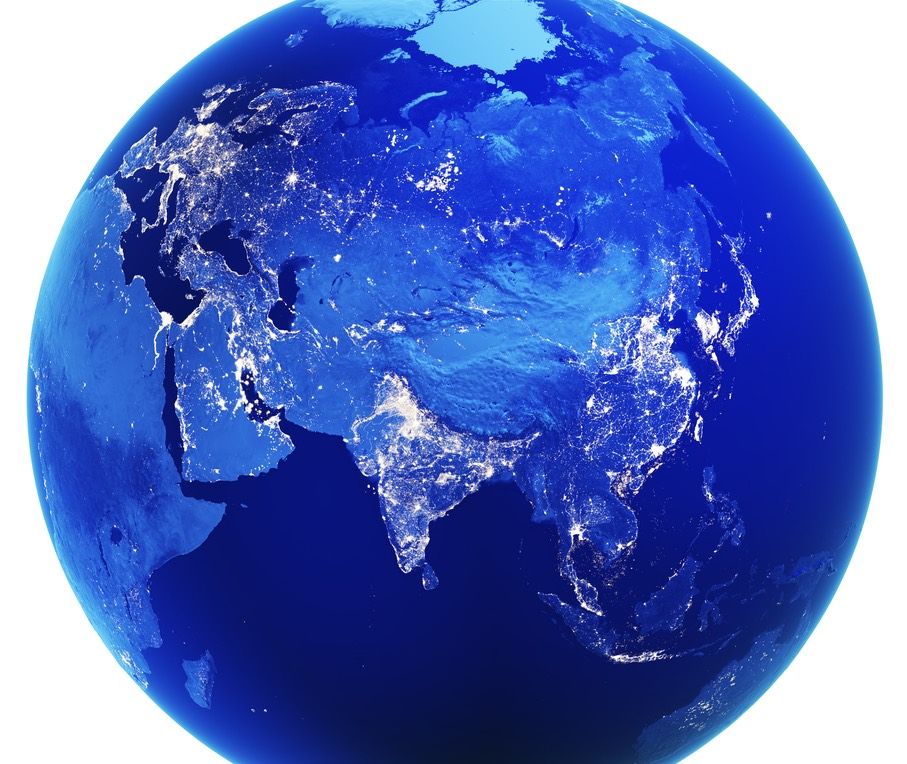How Did a Chunk of India and Eurasia Just Disappear?

Half of the mass of Eurasia and India is missing, new research finds, and may have been swallowed up by the Earth's mantle.
If so, that would be a surprise, as geoscientists thought that continental crust — the kind that makes up major landmasses — was too buoyant to dive down into the mantle, the pliable middle layer of the planet upon which the crust rides.
"It used to be thought that the mantle and the crust interacted only in a relatively minor way," study researcher David Rowley, a geoscientist at the University of Chicago, said in a statement. "This work suggests that, at least in certain circumstances, that's not true." [Photo Timeline: How the Earth Formed]
Missing crust
The mystery of the missing crust emerged as Rowley and his colleagues examined the slow-moving collision of the Indian and Eurasian tectonic plates. These two rafts of continental crust have been bumping against each other for 60 million years, crumpling up to form the Himalayan mountains. The researchers combined multiple data sources to figure out the original size of the two continental plates before they started colliding.
These new calculations, published online Sept. 19 in the journal Nature Geoscience, revealed a strange imbalance. Even after accounting for the ruched bits of crust that climbed upward to form the Himalayas, the excess that squeezed out the sides to form southeast Asia, and the crust that eroded over 60 million years and ended up in the oceans, Rowley and his colleagues couldn't explain where half of the original mass of India and Eurasia went. [Earth's 8 Biggest Mysteries]
That led to an unprecedented conclusion.
"If we've accounted for all possible solutions at the surface, it means the remaining mass must have been recycled wholesale into the mantle," said study researcher Miquela Ingalls, a graduate student in geophysical sciences at the University of Chicago.
Sign up for the Live Science daily newsletter now
Get the world’s most fascinating discoveries delivered straight to your inbox.
Unknown interactions
Continental crust isn't supposed to be able to sink in that way. Geoscientists have long known that dense oceanic crust can be "recycled" into the mantle — this is the geologic process that happens at subduction zones like the one off the coast of California. Oceanic crust slides under less dense continental crust like a conveyer belt and, under pressure, becomes ductile and gooey, mixing in with the mantle.
But because continental crust is so buoyant, researchers thought it acted more like a pool raft: Push it down, and it will just pop back up again.
The new research might cause researchers to re-evaluate that interaction and how it works. But the study also has the potential to explain some geochemical mysteries. For example, volcanic eruptions sometimes spew out elements like lead and uranium, which aren't very common in the mantle. These elements are pretty common in continental crust, however. If the India-Eurasia collision is representative, it might explain how these continental materials get recycled into the mantle and then erupt out again, Rowley said.
"The implication of our work is that, if we're seeing the India-Asia collision system as an ongoing process over Earth's history, there has been a continuous mixing of the continental crustal elements back into the mantle," he said.
Original article on Live Science.

Stephanie Pappas is a contributing writer for Live Science, covering topics ranging from geoscience to archaeology to the human brain and behavior. She was previously a senior writer for Live Science but is now a freelancer based in Denver, Colorado, and regularly contributes to Scientific American and The Monitor, the monthly magazine of the American Psychological Association. Stephanie received a bachelor's degree in psychology from the University of South Carolina and a graduate certificate in science communication from the University of California, Santa Cruz.











